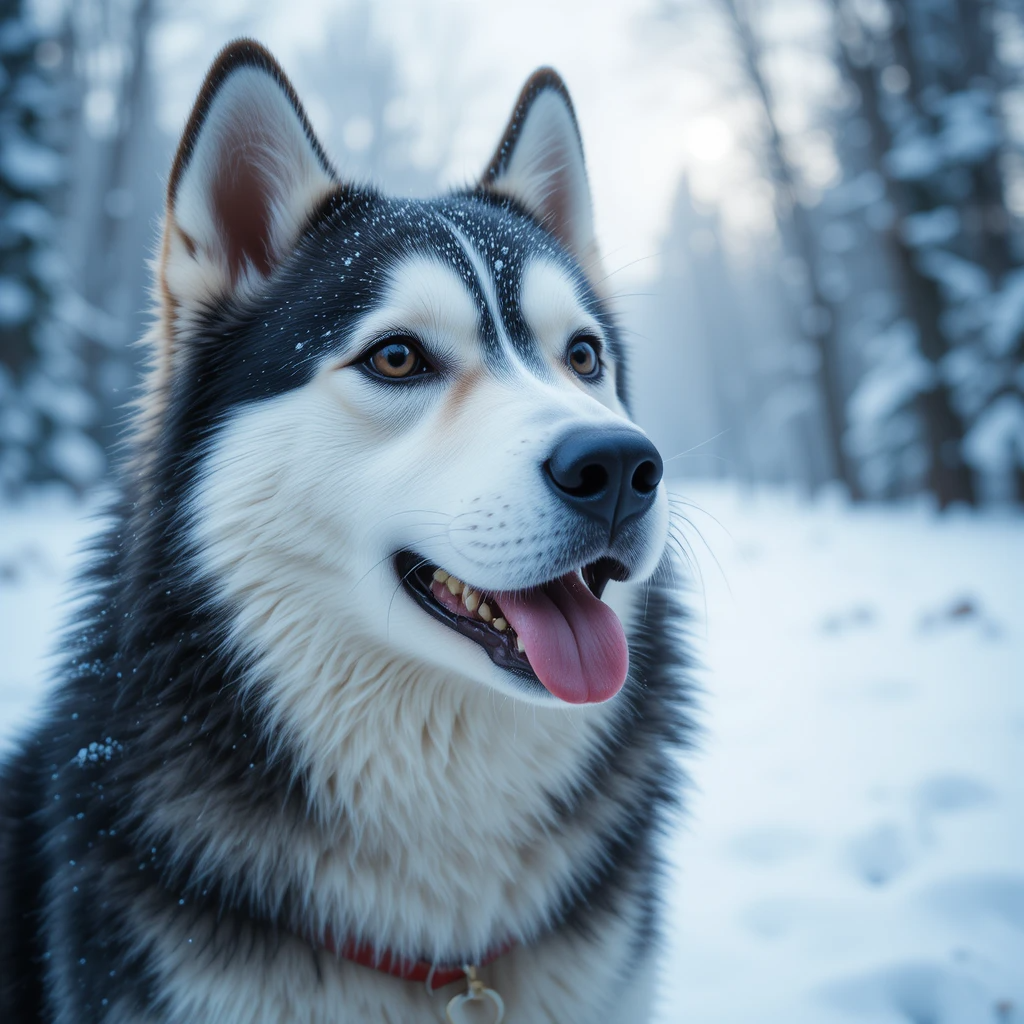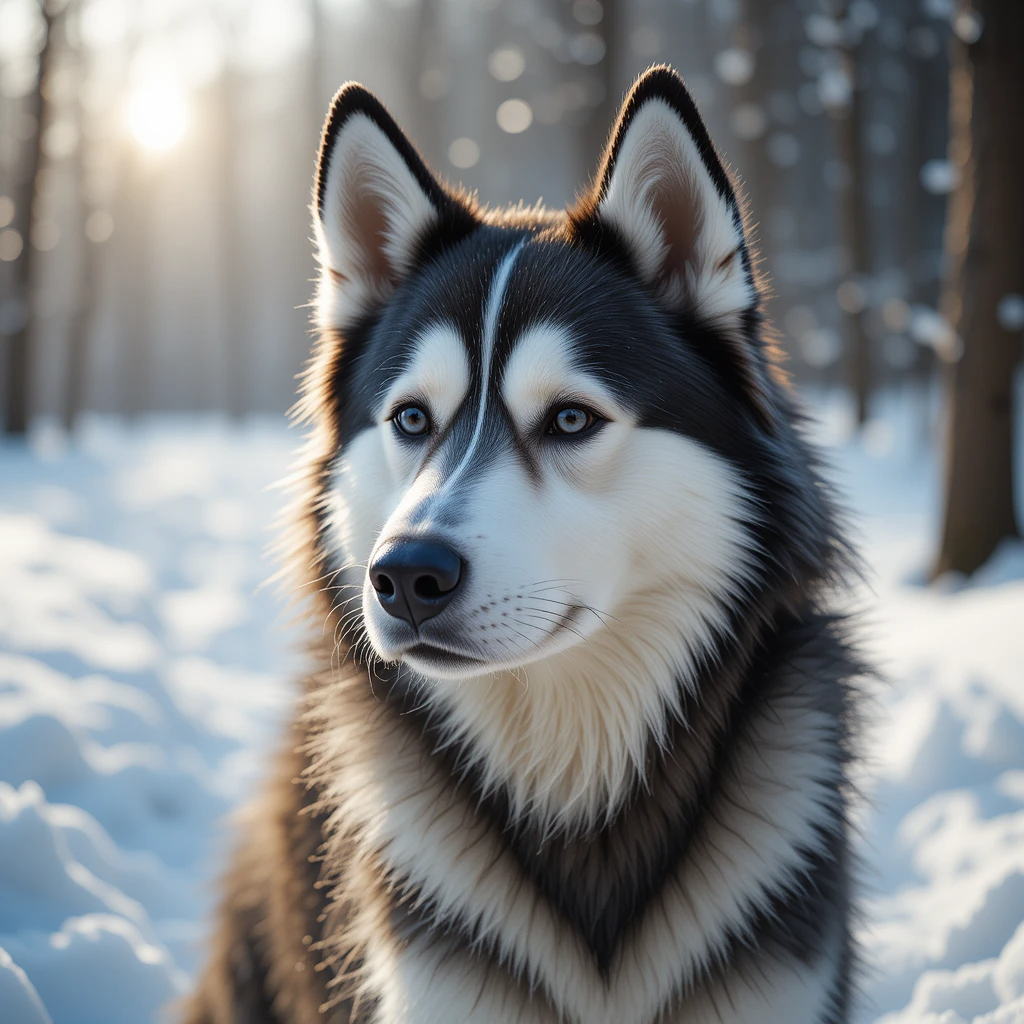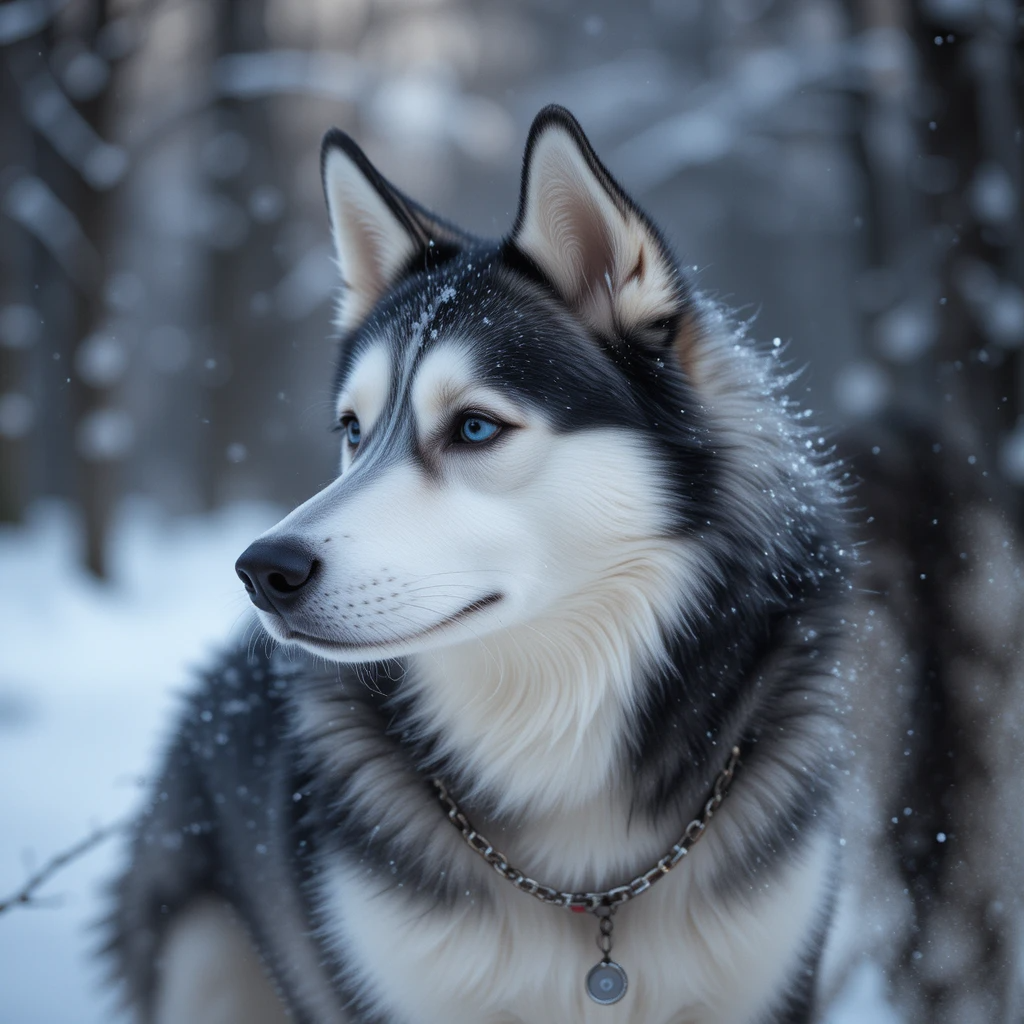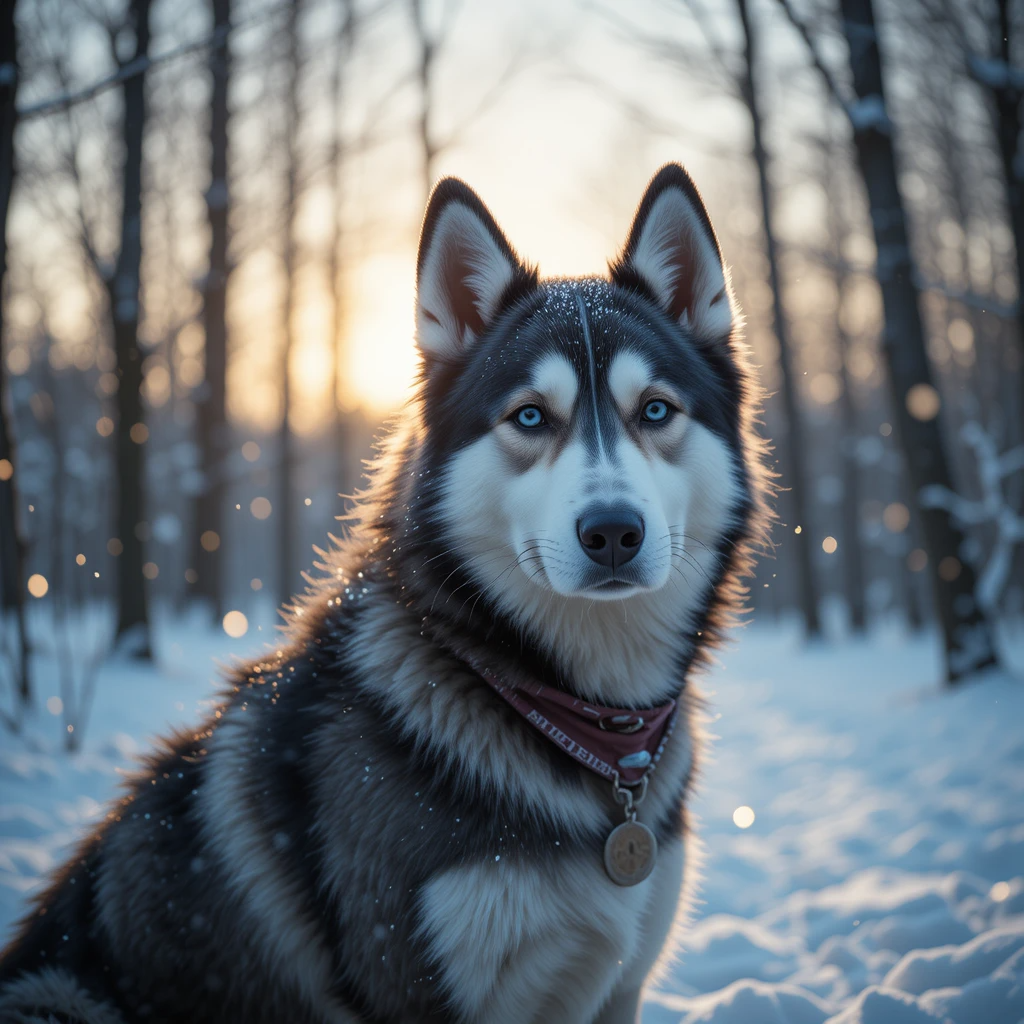As the winter months approach, it’s time to start Winter with Husky preparing for the colder weather — and this includes taking good care of your Husky. Known for their majestic fur and love for the cold, Huskies are naturally built for colder climates, but that doesn’t mean they don’t need extra care when the temperature drops. Winter poses a unique set of challenges, and as a responsible pet parent, it’s important to ensure your Husky stays healthy, comfortable, and happy.
In this guide, we’ll explore everything you need to know about getting your Husky ready for winter. From grooming to winter walks, here’s a comprehensive look at how to prepare for winter with your Husky.
Table of Contents
1. Grooming Your Husky for the Cold
Huskies have a thick double coat that keeps them insulated in freezing temperatures, but this requires regular grooming to remain effective. Their coat helps them stay warm, but without proper maintenance, it can cause discomfort or even lead to health issues.
- Brushing: Regular brushing is crucial to maintain your Husky’s fur. Not only does it help with shedding, but it also prevents tangles and matting, especially around their undercoat. Matting can trap moisture and snow, which could lead to discomfort or skin problems. Aim for brushing at least twice a week to keep your Husky’s coat in top condition.
- Shedding: While Huskies shed year-round, they shed more heavily during the spring and fall. During winter, their fur should be thick enough to provide insulation, but it’s important to keep an eye on the shedding so you can prevent hair from accumulating indoors. Brushing will keep the shedding under control.
- Bathing: Bathing your Husky in winter doesn’t have to be frequent, but it’s a good idea to give them a bath every few months to remove dirt and excess oils. Always ensure your dog is fully dried after their bath before allowing them outdoors. Wet fur in cold weather can cause them to chill quickly.

2. Winter Clothing: Does Your Husky Need It?
Even though Huskies are built for the cold, there are times when they might need a little extra protection. The key here is understanding when winter clothing is necessary for your dog’s comfort.
- Boots for Their Paws: While Huskies have tough paws, they can still be affected by ice, snow, and road salt. These can cause irritation or even cuts on their paw pads. Booties are a great option to protect their feet from the harsh elements. If your dog isn’t used to wearing boots, start by introducing them indoors and gradually build up to outdoor walks.
- Jackets and Sweaters: Huskies generally have the fur to handle cold weather, but during extremely cold spells or if they are less active, they may benefit from a light jacket or sweater. This is especially true for senior Huskies, puppies, or dogs with thinner coats. Be sure to choose a sweater that allows for movement and doesn’t restrict their natural gait.
- Drying Off After Walks: After a winter walk, you may notice snow or ice clinging to your Husky’s fur. It’s essential to dry them off as soon as they come inside, particularly around the paws, belly, and underbelly. Wet fur can lead to your dog getting cold quickly, especially if there’s a draft indoors.
3. Exercise: Keeping Your Husky Active During Winter
Huskies are energetic and active dogs who need regular exercise, no matter the season. While winter weather provides some unique challenges, it doesn’t mean you have to skip walks or playtime.
- Adjust Walk Times: As temperatures drop, the best times for walks are early in the morning or late afternoon when the temperatures are less harsh. Avoid walking during the midday sun when the air can be dry or windy.
- Indoor Games: If the weather outside isn’t suitable for a long walk, you can still keep your Husky entertained indoors. Try interactive games like fetch, tug-of-war, or puzzle toys that challenge their brain. Huskies are highly intelligent and need mental stimulation, especially when they can’t go outside.
- Play in the Snow: Huskies love snow! If you live in an area with heavy snowfall, this is the perfect time to engage your Husky in some snow play. Just make sure to keep an eye on how much time they spend outdoors to avoid frostbite, and ensure they’re always dry and warm when they come inside.
4. Hydration and Nutrition: Ensuring Health During Winter
While Huskies are known for their hearty appetite and love of exercise, the colder months may require you to tweak their diet and hydration routine. Staying properly nourished and hydrated is vital for their overall health.
- Hydration: In winter, it’s easy to forget that hydration is still important. Cold weather might make your Husky feel less thirsty, but they still need access to fresh water throughout the day. Make sure their water bowl is cleaned daily and refilled with fresh water, as snow or ice accumulation can make it difficult for your dog to drink.
- Dietary Adjustments: When the temperature drops, your Husky may burn more calories to keep warm. If your dog is very active in the cold, you might need to increase their calorie intake to match their energy expenditure. Consult your vet for advice on adjusting their diet for the winter months.
- High-Quality Food: Choose food with higher protein and fat content to ensure they have the necessary nutrients for energy. During winter, your Husky may need more sustenance to keep their coat thick and healthy, especially if they spend time outside in the snow.

5. Health Check-Ups: Winter-Specific Health Considerations
Winter can introduce some unique health challenges for your Husky. Regular check-ups are important to ensure they’re in good shape, especially during the colder months.
- Paw Care: The cold can be tough on your Husky’s paws, especially if they’re walking on salted roads or frozen sidewalks. After each walk, inspect their paws for cracks, cuts, or signs of irritation. Applying a paw balm can help protect them from the harsh elements.
- Ear and Nose Health: Huskies are prone to frostbite on their ears, so keep an eye on them during long outdoor excursions. If you notice redness or swelling, it’s important to take care of their ears promptly. Similarly, keep their noses moisturized with a safe balm.
- Joint Care: As Huskies age, they may develop joint problems, and the cold weather can exacerbate discomfort. Be mindful of how your dog moves and avoid forcing them into strenuous activities if they show signs of stiffness. Joint supplements can be beneficial for senior Huskies, but it’s best to consult with your vet before making any changes.
6. Create a Cozy Indoor Environment
Winter isn’t just about the great outdoors — it’s also about making sure your Husky is comfortable inside. A cozy indoor space can help them feel relaxed after a long day of snow play.
- Comfortable Bedding: Huskies tend to curl up in cozy spots to sleep, so provide them with a soft, insulated bed. Look for beds with thick padding to keep them off cold floors, especially if you have tile or hardwood.
- Humidifier: The dry air during winter can irritate your Husky’s skin and respiratory system. A humidifier will help maintain a comfortable level of moisture in the air, reducing dryness.
- Safe Heat Sources: Be cautious with space heaters and other heat sources. Make sure they’re out of reach of your Husky to avoid burns or accidents. If using a heating pad, always place it under a blanket or bed and never directly on your dog.
7. Mental Stimulation and Training: Preparing for Winter Adventures
Winter weather can create new challenges for your Husky, but it’s also a great opportunity to reinforce some training.
- Training for Winter Walks: Walking on ice or slippery surfaces can be tough for your dog, so reinforce commands like “slow down” or “stay” to ensure they don’t slip. Practice walking on different terrains, from snow-covered paths to icy sidewalks.
- Socialization: While your Husky may be used to socializing in dog parks, winter can change the dynamic. If you plan to take them to the park, ensure the area is safe and the ground is not too slippery. Socialization is important year-round, so keep those interactions frequent, even in the cold months.

Conclusion
Winter with a Husky can be a truly magical experience, but it’s also important to take steps to ensure your dog’s well-being. By following these tips — from proper grooming and nutrition to health checks and winter-proofing your Husky’s environment — you’ll make sure that the colder months are just as enjoyable for your dog as they are for you. With the right preparations, your Husky will thrive in winter, enjoying every snowy adventure in comfort and style.

